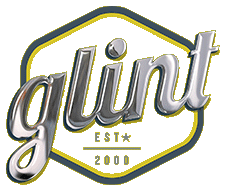There seems to be a never-ending list of ways to market your business in this day and age. With thousands of messages being communicated through numerous channels every day, it can be difficult, time-consuming, and expensive to effectively reach your target audience. Additionally, with such a wide variety of media outlets, audiences have become fragmented, making some consumers harder to reach than others. Implementing an integrated marketing strategy is your best bet for achieving long-term success. A company’s identity, and the messages they are conveying, should be cohesive and consistent across all channels. They should reinforce one another, so your audience has a clear sense of your values. Integrated marketing is like a puzzle: all of the pieces must represent the same idea in order to come together to create a clear final picture.
In 1989, the American Association of Advertising defined integrated marketing as “an approach to achieving objectives of a marketing campaign through a well-coordinated use of different promotional methods that are intended to reinforce each other.” Although this definition still holds true, the variety of marketing vehicles available to businesses has expanded greatly. Glint Advertising operates by the definition that integrated marketing is the implementation of a consistent marketing message across multiple platforms, digital and traditional media alike. These multiple platforms should reinforce one another and create a cohesive brand identity. Companies that communicate a consistent message and identity are more likely to break through the noise and reach consumers. (If you’re more visual, you can click here to see samples of how Glint Advertising has integrated brands visually and socially across multiple mediums.)
According to a recent global survey conducted by Forrester Research, 86% of the marketing decision-makers surveyed believe successfully integrating multiple channels under a single marketing strategy is critical to long-term success. Furthermore, 66% believe a multi-channel customer is worth substantially more than a single-channel customer. A single, unified strategy that is implemented across several channels not only maximizes brand exposure, but can greatly increase revenue and brand perception when done correctly.
The benefits of integrated marketing are endless. It allows advertising budgets to go further by minimizing management and accounting time, while cutting back on implementation time because content is produced for multiple platforms simultaneously. But to effectively integrate your marketing, more than money is needed. Businesses must be willing to put forth the time and effort needed to coordinate and maintain a unified marketing campaign. Integrated marketing also garners a more expansive reach by interacting with consumers through many different mediums and channels. Lastly, it engages and links multiple platforms together by driving users from one medium to another. If you’ve ever found yourself watching a TV commercial that prompts you to log on to their website to see how it ends, you’ve experienced integrated marketing at work. The brand is pushing the audience through their other platforms, which consumers may not have visited or engaged with on their own.
Implementing an integrated marketing campaign requires advertising professionals who understand the limitations of each medium, the message expectations of the viewers, and the ability to find the commonality between them all. Did we mention the cost-efficiencies that can also be created and the opportunities for added value within media? If you’d like to know more, chat us up within the blog, visit us online at glintadv.com, or give us a ring at 817-616-0320.






